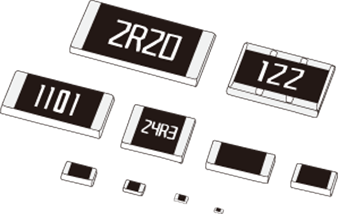Yes, 1206 refers to a specific size of chip resistor (or passive component such as chip capacitor).
Specifically:
1206 is the encapsulation size code: this code represents the physical size of the component.
Imperial units: 1206 indicates that the length of the component is approximately 0.12 inches (120 miles) and the width is approximately 0.06 inches (60 miles).
Metric unit: The corresponding metric dimension is 3216, which means the length of the component is approximately 3.2 millimeters and the width is approximately 1.6 millimeters.
2. Surface mount resistors: This refers to resistors designed for surface mount technology (SMT). They do not have long leads, but are directly soldered onto the solder pads of a printed circuit board (PCB).
Summary:
When you say '1206 resistor', you are referring to surface mount resistors with packaging sizes of 1206 (imperial) or 3216 (metric).
1206 itself is not a resistance value (resistance value), it only describes the external size of the resistance.
The resistance value needs to be determined by the digital code printed on the resistor body (such as "103" representing 10k Ω) or by measurement.

Common size codes for other surface mount resistors (imperial/metric):
0201/0603: 0.02 "x 0.01"/0.6mm x 0.3mm (very small)
0402 / 1005: 0.04" x 0.02" / 1.0mm x 0.5mm
0603 / 1608: 0.06" x 0.03" / 1.6mm x 0.8mm
0805 / 2012: 0.08" x 0.05" / 2.0mm x 1.25mm
1206/3216: 0.12 "x 0.06"/3.2mm x 1.6mm (size you asked for)
1210 / 3225: 0.12" x 0.10" / 3.2mm x 2.5mm
1812 / 4532: 0.18" x 0.12" / 4.5mm x 3.2mm
2010 / 5025: 0.20" x 0.10" / 5.0mm x 2.5mm
2512/6432:0.25 "x 0.12"/6.4mm x 3.2mm (larger, higher power)
So, the next time you see "1206 resistor", you will know that it refers to a standard chip resistor that is 3.2mm long and 1.6mm wide.
